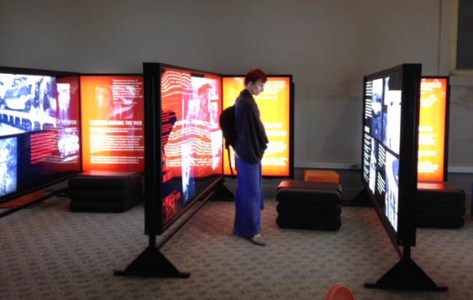This letter from Norman Y. Mineta, JANM’s new Chair of the Board of Trustees, is an expanded version of one that appeared in The Rafu Shimpo earlier this month.
After a relatively short period of time, though an arduous journey, the Japanese American National Museum (JANM) has acquired the Allen H. Eaton collection of Japanese American art and artifacts. The Eaton Collection consists of some 450 items produced by those of Japanese ancestry and those who were unjustly incarcerated during World War II. The acquisition occurred after Rago Arts and Auction Center cancelled its scheduled public auction, which threatened to break up the collection and would have scattered the art pieces to numerous individuals and institutions.
The cancellation occurred as a result of thousands of people who raised awareness through social media, grassroots organizing, the threat of an injunction by the Heart Mountain Wyoming Foundation, and a personal appeal by George Takei to David Rago, a principal of the auction house. Without a doubt, this was a victory for the total community.
In the rush to “wrap up” as quickly as possible, since the window of opportunity was short, the process was abbreviated and certain individuals and organizations were not contacted, to their dismay. For that, JANM apologizes.
The Japanese American National Museum, as its name implies, is the appropriate organization to become the stewards of these art objects. JANM is national in scope and outreach, with a curatorial staff to preserve the history of its collections while protecting and conserving their significant holdings. The Eaton Collection has just arrived at JANM, and it will require extensive conservation to preserve it and to establish a baseline for future care. JANM is the right institution to steward these precious artifacts on behalf of the Japanese American community and the total community for generations to come.
JANM has, and will continue to play, an active leadership role to involve multiple community stakeholders in shaping the collection’s future. As many are aware, there was a conference call on May 13, 2015 that was moderated by Dr. Franklin Odo that included representatives from the Heart Mountain Wyoming Foundation, the Japanese American Citizens League, Smithsonian Asian Pacific American Center, the Wing Luke Museum of Seattle, the Ad Hoc Committee to Oppose the Sale of Japanese American Historical Artifacts, JANM, and many other individuals and organizations to start the discussion for a positive and collaborative healing path for our community. This was the first of what will, no doubt, be many such conversations around the Eaton Collection.
As the conservation process and discussions progress on the Eaton Collection, we view it, along with all of our artifacts, as a shared community treasure of which the Japanese American National Museum is the guardian. As with many museums, there are ways to share the art objects through traveling exhibitions and long-term loans to other museums and institutions where the public would be able to see and have access to these artifacts.
We look forward to working with all of the community stakeholders to come to a positive, jointly shared solution.
Norman Y. Mineta
Chair, Board of Trustees
Japanese American National Museum















